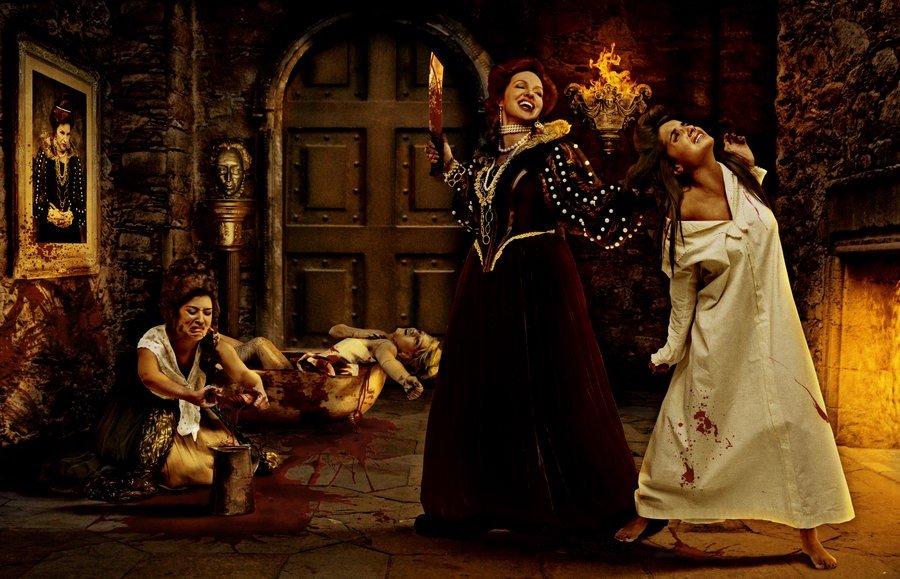Elizabeth Bathory: A Hungarian Serial Killer who killed 650 women
Elizabeth Bathory is a 16th-century noblewoman and is notorious throughout Central Europe for her acts of torture and murder. Her history took a dark turn as rumors and claims about her involvement in horrible crimes began to surface.
Elizabeth received the ominous title “Blood Countess” or “Blood Queen” for torturing and murdering hundreds of young women. Her life story is a terrifying blend of aristocratic luxury and horrible brutality that continues to charm those who dive into the diaries of real crime history.

Who was Elizabeth Bathory?
The Blood Queen Elizabeth originally known as Báthori Erzsébet. She was a wealthy and powerful Hungarian noblewoman from the royal Bathory family. Her uncle was a king of Poland and her nephew was a prince of Transylvania.
She was a horrible serial killer who murdered at least 600 women which earned her the Guinness World Record for the most prolific female murderer. She may have served as inspiration for Bram Stoker’s Dracula.

Early Life and Marriage
Elizabeth was born on August 7, 1560, in Nyrbator, Hungary. She was a beautiful and well-educated young lady. She was engaged to nobleman Count Ferenc Nadasdy when she was eleven.
According to certain stories, Elizabeth gave birth to an illegitimate child fathered by another man before her marriage. She married Count Ferenc at the age of 14 on May 8, 1574. The couple had their first child after ten years in 1584.

Elizabeth was the mother of five children. Two of them were stillborn but two daughters and a son survived. Because her spouse was a soldier who was frequently away battling Ottoman Turks, they spent the majority of their marriage apart.
When they remained together, Ferenc taught his wife the tactics of torture which he used with his enemies at war.
He told her to place oil paper on the toes of the victim and let her burn by igniting a fire.
They both brutally tortured their disobedient female servants.
Brutality and Horrible Crimes
Elizabeth had a horrific list of atrocities against female servants and small noblewomen who had come to her for training and education. The majority of her reported assaults and murders took place after she was widowed in 1604.
Her victims were covered in honey and placed outside for insects to feast on. She used to strip the young women naked and force them into lethal ice baths during cold months.
The Blood Queen tortured females by inserting needles into their fingers, slashing their noses and lips, and whipping them with stinging nettles. She would bite shoulders and breasts as well as burn some victims’ flesh including their genitals.
Capture of Elizabeth Bathory
The families of victimized women by Elizabeth soon started to notice their sudden disappearance. They got suspicious about The Blood Queen and took this matter to the high officials of Hungary.
The Lord of Hungary Count Gyorgy Thurzo arrived at Elizabeth’s Castle Cachtice on December 29, 1610, to examine the alleged offenses against her. He supposedly surprised Elizabeth as she was torturing a victim. Soon, Count Gyorgy obtained evidence and arrested Elizabeth. Her high status meant she would not be arrested as a normal criminal.
According to one witness, Elizabeth herself listed 650 deaths in her files, though the number of victims changed in other testimonies. The precise death toll at the hands of Blood Queen remains unknown. Count Gyorgy gathered evidence that included 289 witness statements.
The slaves of Elizabeth including three females and one male were taken captive. Hungarian officials questioned, and tortured them for investigation of murders brought about by their mistress. The legal actions began against them early in January 1611.
Her slaves denied any involvement in the murders but admitted to burying many dead women with the number varying between 36 and 51 in their reports. They blamed their queen and each other for the murders.
Three servants namely Ilona Jo, Dorka, and Fizcko were sentenced to death quickly, The fourth one was Katalin spared immediate execution and was sentenced to life imprisonment.
Isolation at Castle Cachtice
Elizabeth Bathory was not punished since she was a member of a powerful family. Instead, she was confined possibly walled up in Castle Cachtice till her death. She spent the whole time cursing Count Gorgy during her confinement. Because Count Gorgy was the man who captured her and led her to spend the prisoner’s life.
Death of Elizabeth Bathory
The officials found the dead body of 54-year-old Elizabeth at Castle Cachtice (present-day Slovakia) on August 21, 1614. She remained imprisoned here since 1610. Her dead body was most likely transported after she was buried in the crypt of her estate.
Click here to read the story of Iraqi Cannibals Abboud and Khajawa who killed 100 children
Hungarian officials handed over properties of Elizabeth to her family members rather than seizing them. Because she was not convicted of her crimes due to her high royal status.
The motivations behind the horrific crimes of Elizabeth remain a topic of debate among historians. Some theories suggest mental illness or a thirst for maintaining her youth through blood rituals. There are speculations that she used to take a bath in the blood of her murdered victims to extend and maintain her beauty.
While others propose political conspiracies or exaggeration of her misdeeds due to her wealth and status. The exact reasons behind her actions and brutal acts remain shrouded in mystery and historical speculation.
Conclusion
The Hungarian Blood Queen Elizabeth Bathory is still famous for her reported cruel deeds and horrific killings in the 16th and 17th centuries. While the scope of her crimes is uncertain. Her status as one of history’s most prominent female serial killers lives on. Her story casts an ominous shadow on criminal history.
Share this content:



Post Comment